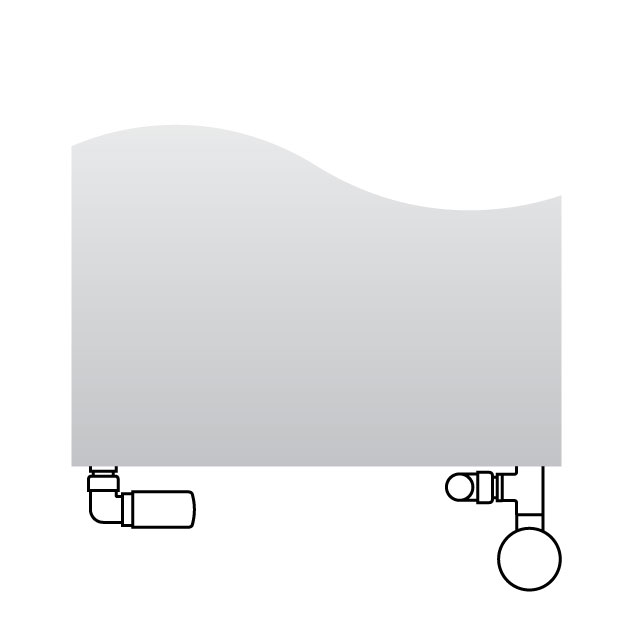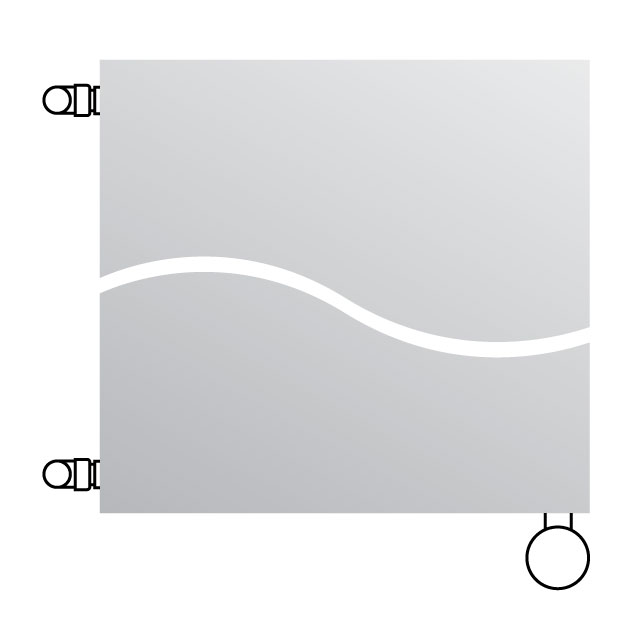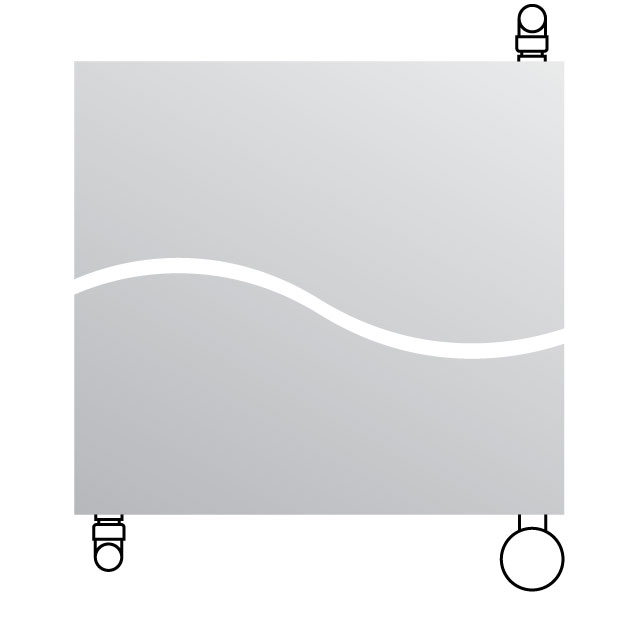A wide range of connection openings in Terma radiators allows choosing the most suitable connection type for heating element installation. Such combination carries a number of benefits for the user. Those include:
- use of a standard bathroom central heating radiator as an electric dryer, also outside of the heating season (i.e. in the summer),
- additional heat source (e.g. in the bathroom) outside of the heating season without the necessity to turn on the entire central heating system.
Recommended heating element connection types in a central heating radiator:
 |
 |
 |
| [Drawing 1 – electric heating element is installed directly in the radiator; integrated thermostatic valve is used for water connection] Connection types: Z1, Z8, Y8, Y1 | [Drawing 2 – electric heating element is installed directly in the radiator; integrated thermostatic valve with immersion tube is used for water connection] Connection types: SX, S1, S8 | [Drawing 3 – electric heating element is connected in the radiator via lockshield valve integrated with T-piece] Connection type: SX |
 |
 |
 |
| [Drawing 4 – electric heating element is connected via T-piece; lockshield valve is also used] Connection type: SX | [Drawing 5 – electric heater is connected directly to the radiator with side connection to central heating system] Connection types: L8, P1, 58, 51 | [Drawing 6 – electric heater is connected directly to the radiator with crosswise connection to central heating system] Connection types: GD, UN, UC |
One of the valves in the radiator should remain open during the time when electric heating element is used. This is to prevent excessive pressure inside the radiator which in turn may lead to radiator or heating element damage. Also, always mount the heater on the return of the heating medium, never on the supply.
TERMA heating elements meet all the required European safety and burning prevention regulations. Therefore, the temperature of the heating medium in the installation where an electric heating element is installed, should not exceed 82°C. Such temperature could damage the thermal fuse built-in inside the heating element.
Distribution of heat and temperature values on the surface of an electric radiator depend on many different factors. Geometry of the radiator is the most fundamental one. Electric heating element should always be installed in the bottom part of the radiator.
Electric heating element is an element protruding outside of the radiator body. Therefore, a radiator should be located in a way that will prevent the heating element from possible damage (the heating element should not be stepped on or used as a hanger).
 |
 |
| [Drawing 7 – heating element is connected vertically at the bottom of the radiator with horizontal pipes] Connection types E1, E8, EX | [Drawing 8 – heating element is connected vertically at the bottom of the radiator with vertical pipes] |


